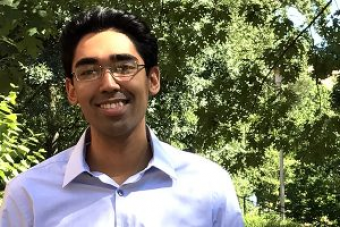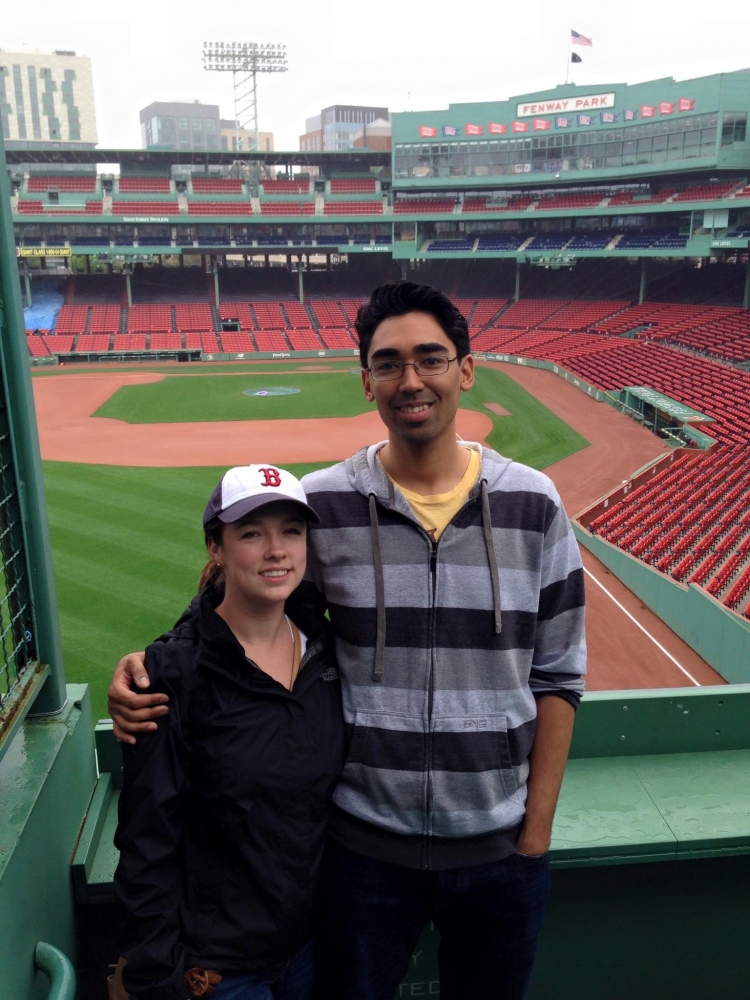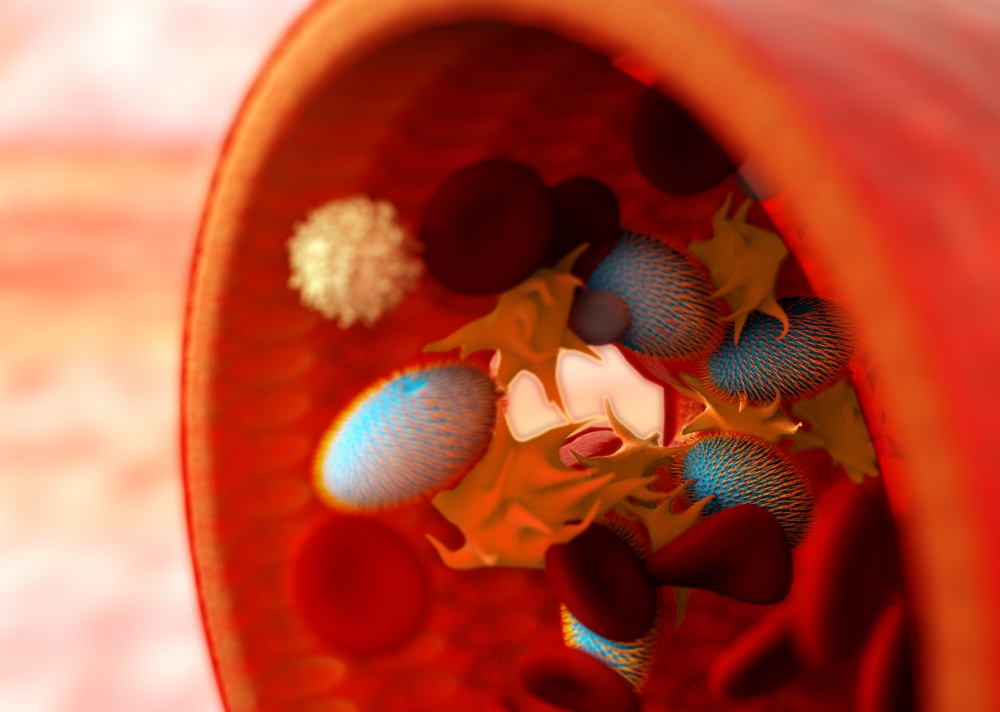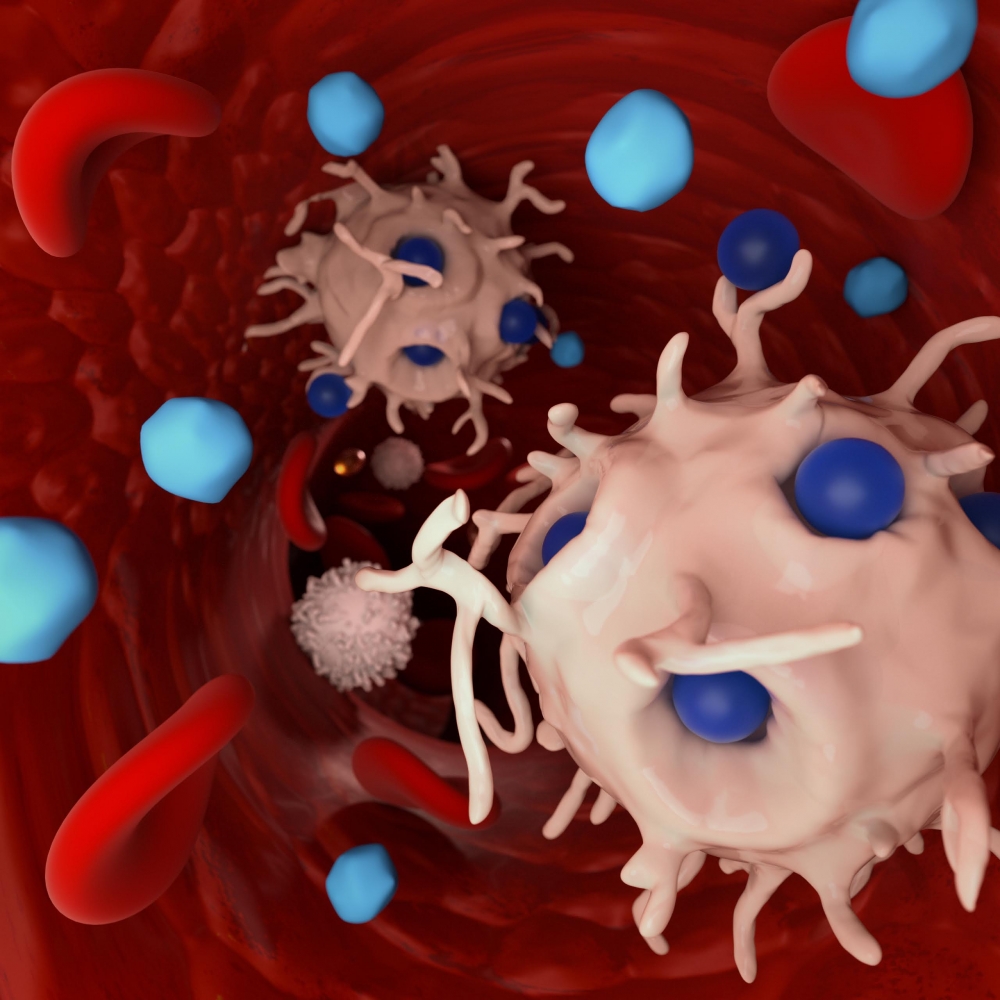
A collaborative and diverse educational background from the shores of UC Santa Barbara creates impact for the world, and set the path for a Chemical Engineering graduate who continues to pursue technologies to improve life.
Aaron Anselmo, PhD, 2015, joined the Division of Pharmacoengineering and Molecular Pharmaceutics on July 31, as an assistant professor at the Eshelman School of Pharmacy at the University of North Carolina at Chapel Hill. His faculty appointment includes both a research and teaching role.
In broad terms, Anselmo aims to develop approaches to replace the pathogenic microbes in our body with therapeutic ones. His research focus looks to deepen the understanding of how our microbiota composition promotes either health, or disease, in the community of fungi, viruses, and bacteria, that live within our stomachs.
“My research will lead to the development of next-generation cell therapies, for example, microbe/bacteria-based delivery systems, to ensure that our microbiota is in a state that promotes gastrointestinal and overall health,” Anselmo said. “I will address the main challenges currently facing the delivery of therapeutic microbes to, and integration into, the gastrointestinal tract."
A separate challenge Anselmo’s work faces is the delivered microbe must navigate our complex mucosal barrier to interact and displace pathogenic microbes. His efforts here will be to formulate therapeutic microbes with polymers and other biomolecules, equipping them to survive the unforgiving conditions of our gastrointestinal tract, and integrate into our existing microbiome.
“My ultimate goals are to better understand the chemical, material, and biological world that we live in, so that we invent and develop technologies to improve life.”
 Armed with a Bachelor of Science degree from Rensselaer Polytechnic Institute, where he met his wife Mary Sacchetti, Process Engineer and Red Sox fan (Anselmo is not a Sox fan!), he shifted to the UC Santa Barbara Department of Chemical Engineering to pursue his PhD.
Armed with a Bachelor of Science degree from Rensselaer Polytechnic Institute, where he met his wife Mary Sacchetti, Process Engineer and Red Sox fan (Anselmo is not a Sox fan!), he shifted to the UC Santa Barbara Department of Chemical Engineering to pursue his PhD.
As a National Science Foundation Graduate Research Fellowship Program Fellow he worked under the supervision of Professor Samir Mitragotri, and the lasting rapport that he established continues to this day.
“As my PhD advisor, Samir was always supportive, encouraging, and provided me with many opportunities. He continues to be an outstanding mentor and role model,” Anselmo shared. “Since I have left UCSB, Samir has continued to mentor and support me as my professional career has progressed.”
The grateful mentee has authored more than 30 peer-reviewed research publications in the field of drug delivery, including Nature Nanotechnology, Advanced Materials, ACS Nano, and PNAS. And, together with Professor Mitragotri and Stefano Menegatti, has submitted a 2014 patent application for Synthetic Platelets. Manegatti completed his post-doc in Chemical Engineering at UC Santa Barbara under Mitragotri, and is now an Assistant Professor at North Carolina State University.
“Being able to be part of a research culture that embodies, and in many ways pioneered, interdisciplinary research that integrates fundamental and applied approaches has been an invaluable experience,” Anselmo said. “And it has shaped how I view, and perform, research today.”
Following UC Santa Barbara, Anselmo completed his postdoctoral work at the David H. Koch Institute for Integrative Cancer Research at MIT, working in the laboratory of Institute Professor Robert Langer.
At UNC, he will be studying microbiomes in the gastrointestinal tract, and leveraging pharmaceutical sciences, materials science, biology, and chemical engineering to develop innovative cell therapies.

His new institution notes that Anselmo’s engineering background will strengthen the UNC’s pharmacoengineering efforts.
“My background in using engineering approaches to design and develop drug delivery systems has allowed me to bring both a different perspective and set of skills to pharmaceutical sciences,” he said.
In addition to the strong engineering foundation at UC Santa Barbara, Anselmo found opportunities on campus in the physical and biological sciences, and specific research areas that were only being studied here.
This breadth of dialogue fostered a pursuit of other research interests, including developing bioinspired drug delivery systems that leverage the natural abilities our own blood cells have to improve delivery of therapeutics for applications in vascular disease and cancer.

“An example of this is cellular hitchhiking, where drug-carrying nanoparticles are non-covalently attached to the surface of red blood cells, or monocytes, to extend their circulation time, or increase their targeting to diseased tissues, respectively,” Anselmo explained.
His research and approach has also led to other applications as well, including distinct drugs, delivering protection and live bacteria cells, as well as micronutrients, such as vitamin A or D, or small peptides, like insulin.
Anselmo’s integrated and applied research background covers a growing focus of interest in the pharmaceutical formulation field.
“Personalized medicine has been an active area of research for quite some time, and as we understand more about how an individual’s microbiome influences health, disease, and even drug efficacy, I foresee an overlap between personalized medicine and microbiome drug delivery to optimize dosage, and perhaps delivery,” Anselmo said.
It is this passion for a better understanding of microbiome-material interactions, that sprung from a collaborative research background at UC Santa Barbara, that pushes Professor Anselmo towards enhancing the medical needs and treatment of patients.
“My ultimate goals are to better understand the chemical, material, and biological world that we live in, so that we invent and develop technologies to improve life.” ChE
PLNs: By understanding the role of key biophysical and biochemical parameters in nanoparticle circulation and targeting, we engineered synthetic platelets that mimicked our natural platelet's abilities to bind and plug wounds.
Anselmo, A. C., Modery-Pawlowski, C.L., Menegatti, S., Kumar, S., Vogus, D.R., Tian, L.L., Chen, M., Squires, T.M., Sen Gupta, A., & Mitragotri, S. “Platelet-like Nanoparticles: Mimicking Shape, Flexibility, and Surface Biology of Platelets to Target Vascular Injuries" ACS Nano, 8(11), 11243-11253, 2014.
Elasticity: Through tuning nanoparticle elasticity, we showed that interactions between cells and nanoparticles can be tuned to optimize drug delivery.
Anselmo, A. C., Zhang, M., Kumar, S., Vogus, D.R., Menegatti, S., Helgeson, M.E., & Mitragotri, S. “Elasticity of Nanoparticles Influences Their Blood Circulation, Phagocytosis, Endocytosis and Targeting” ACS Nano, 9(3), 2169-3177, 2015.
Research images credit: Second Bay Studios.
Melissa Walker is the Communications & Seminar Coordinator/Faculty Assistant for the Department of Chemical Engineering.



